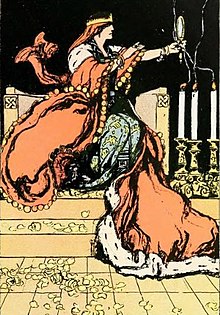
"Snow White" is a German fairy tale, first written down in the early 19th century. The Brothers Grimm published it in 1812 in the first edition of their collection Grimms' Fairy Tales, numbered as Tale 53. The original German title was Sneewittchen; the modern spelling is Schneewittchen. The Grimms completed their final revision of the story in 1854, which can be found in the 1857 version of Grimms' Fairy Tales.

A stepmother, stepmum or stepmom is a female non-biological parent married to one's preexisting parent. Children from her spouse's previous unions are known as her stepchildren. A stepmother-in-law is a stepmother of one's spouse.

"Hansel and Gretel" is a German fairy tale collected by the Brothers Grimm and published in 1812 as part of Grimms' Fairy Tales. It is also known as Little Step Brother and Little Step Sister.
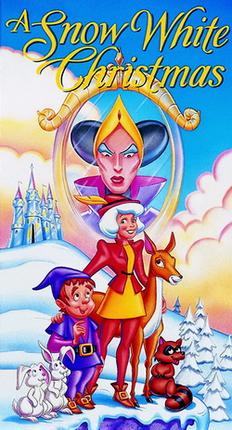
A Snow White Christmas is a Christmas animated television special produced by Filmation and telecast December 19, 1980, on CBS. The special is a sequel to the fairy tale "Snow White", unrelated to Filmation's other sequel to "Snow White" titled Happily Ever After (1989), which ignores everything from this film.

"The Juniper Tree" is a German fairy tale published in Low German by the Brothers Grimm in Grimm's Fairy Tales in 1812. The story contains themes of child abuse, murder, cannibalism and biblical symbolism and is one of the Brothers Grimm's darker and more mature fairy tales.
The Charmings is an American fantasy sitcom that follows Snow White and Prince Charming, awakened from a thousand-year spell, as they adjust from their familiar life in the enchanted forest to the modern ways of 20th-century Los Angeles suburbs. The series originally aired from March 20, 1987, to February 11, 1988, on ABC.
Serena Valentino is an American comic book writer, author, and storyteller. She created the comic book series Gloomcookie and Nightmares & Fairy Tales. She also authored the Villain novels published by Disney Press, which have earned Valentino critical acclaim for her style of storytelling.

The Legend of Snow White is a Japanese anime series produced by Tatsunoko Production, based on the 1812 European fairy tale. Directed by Kunitoshi Okajima, the series premiered on NHK on 6 April 1994 and ran for 52 episodes until its conclusion on 29 March 1995.

Snow White: The Fairest of Them All is a 2001 fantasy adventure television film co-written and directed by Caroline Thompson and produced by Hallmark Entertainment. The film was first released theatrically in Europe, and subsequently aired in the United States on ABC as part of their series on The Wonderful World of Disney on March 17, 2002.
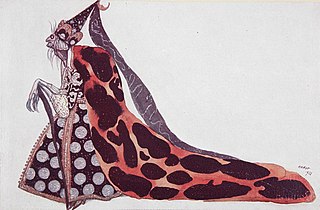
The Wicked fairy is the antagonist of Sleeping Beauty. In some adaptations, she is known as Carabosse. The most notable adaptation of the character is Maleficent, a Disney villain who appeared in various Disney media, beginning with the 1959 Walt Disney film Sleeping Beauty.

Snow White is a fictional character and a main character from Walt Disney Productions' first animated feature film Snow White and the Seven Dwarfs (1937). She was originally voiced by Adriana Caselotti. The character of Snow White was derived from a fairy tale known from many countries in Europe with the best-known version being the 1812 tale collected by the Brothers Grimm.

Snow White and the Seven Dwarfs is a 1955 West German film, directed by Erich Kobler, based on the 1812 story of Schneewittchen by the Brothers Grimm.

Mirror Mirror is a 2012 American fantasy comedy film based on the fairy tale, "Snow White," collected by the Brothers Grimm. The film follows a beautiful princess named Snow White, who uses the help of a band of seven dwarfs as well as a prince, to reclaim her throne from her wicked stepmother, the enchantress Clementianna.

The Land of Stories is a series of children's fiction, adventure, and fantasy books written by American author, actor, and singer Chris Colfer. The first book, The Wishing Spell, was released on July 17, 2012, with the sixth and final book published in July 2017. Colfer started plans for a prequel series in 2016, and has since published three books in this series, beginning with A Tale of Magic... in 2019.
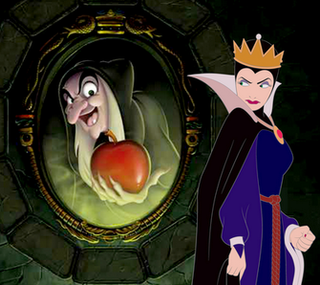
The Evil Queen, also known as the Wicked Queen, Queen Grimhilde, or just the Queen, is a fictional character who appears in Walt Disney Productions' first animated feature film Snow White and the Seven Dwarfs (1937) and remains a villain character in their extended Snow White franchise. She is based on the Evil Queen character from the 1812 German fairy tale "Snow White".
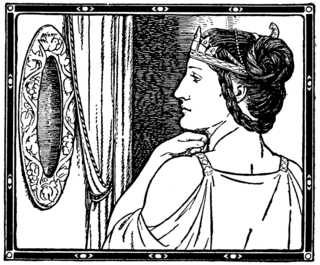
The Magic Mirror is a mystical object that is featured in the story of Snow White, depicted as either a hand mirror or a wall-mounted mirror.
"Snow White" is a German fairy tale known across much of the world. There has been debate over possible origins of the tale and whether it could be an amalgam of other stories, have mythical roots, or be inspired by a real person. It falls within the classification of Type 709 in the Aarne–Thompson–Uther Index.

Snow White and the Seven Dwarfs is a 1938 picture book written and illustrated by Wanda Gág and published by Coward-McCann. Snow White and the Seven Dwarfs was a Caldecott Medal Honor Book in 1939. The book is a twist on the classic tale of Snow White by the Brothers Grimm. Since then it has been republished several times, including in 1999, 2004, and 2013.
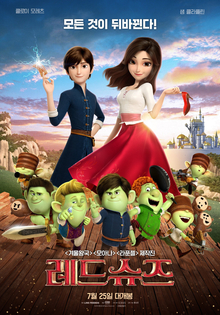
Red Shoes and the Seven Dwarfs, known in Korean as simply Red Shoes, is a 2019 English-language South Korean animated fantasy film produced by Locus Corporation. It is based on the 1812 German-language fairy tale "Snow White" by the Brothers Grimm, and its name is derived from the 1845 Danish fairy tale The Red Shoes by Hans Christian Andersen. The film features the voices of Chloë Grace Moretz, Sam Claflin, Gina Gershon, Patrick Warburton, and Jim Rash.

"Richilde" is a German literary fairy tale, written by Johann Karl August Musäus, published in 1782 in the first volume of his collection Volksmärchen der Deutschen. It is Aarne–Thompson type 709, Snow White, focused on the character of the wicked stepmother.
